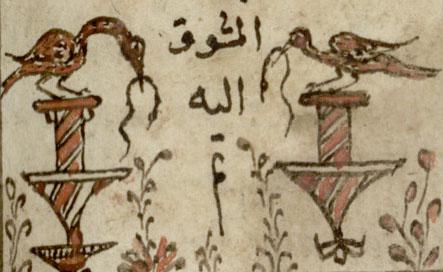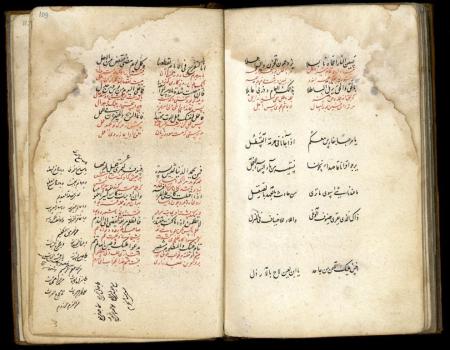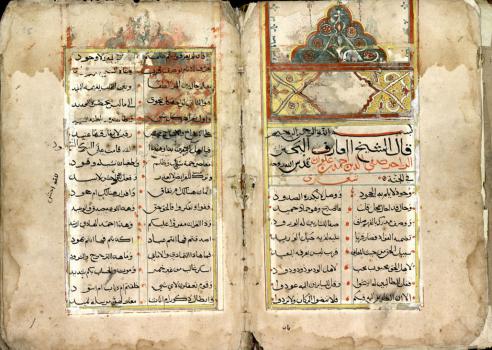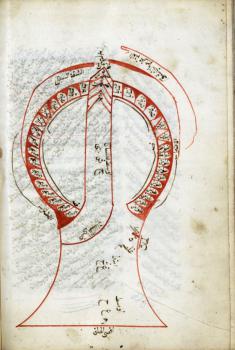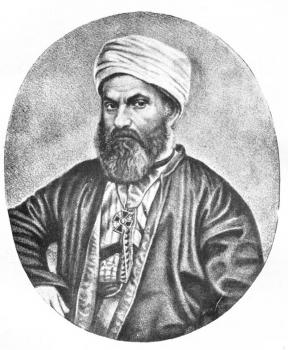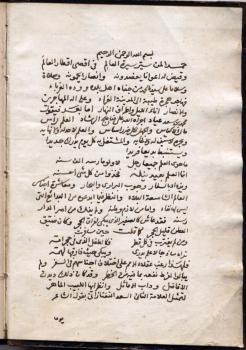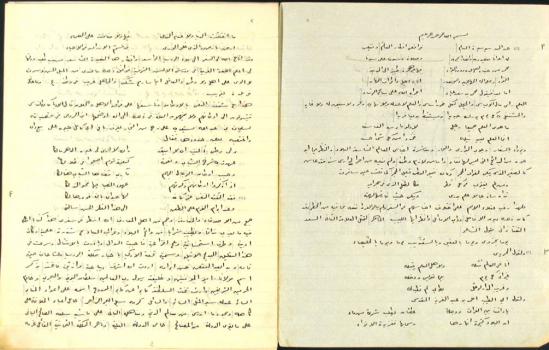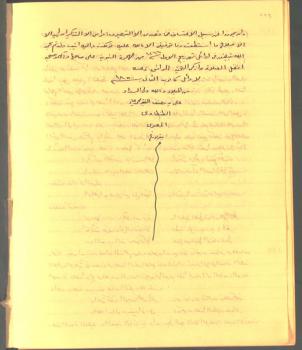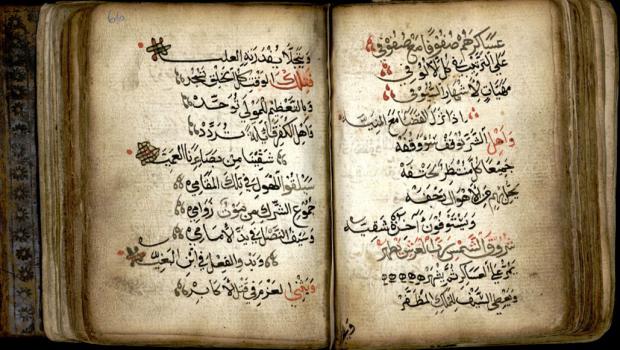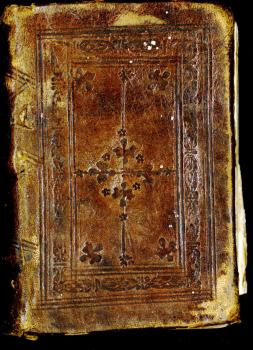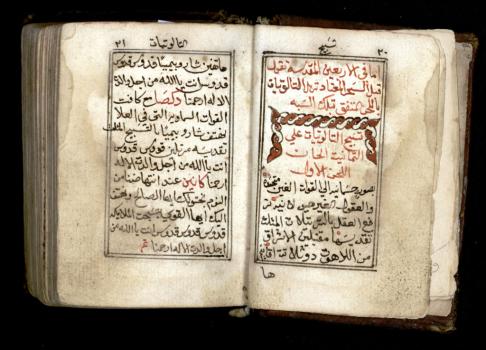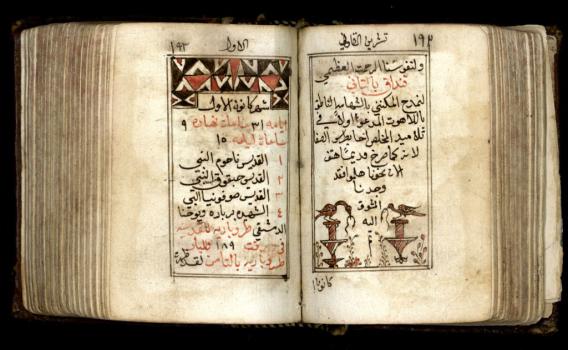Academician-Arabist Ignaty Krachkovsky: his Collection of Oriental Manuscripts in the National Library of Russia
O. V. Vasilyeva
Description of the Collection
The collection received from Vera Krachkovskaya consists of 80 manuscripts, a large part of them, namely 56, are Arabic. In addition, six books contain texts in Arabic and Persian, two manuscripts are in Arabic, Persian and Old Uzbek, also two items are in Arabic and Tatar, and one is in Arabic and Old Uzbek. There are nine Persian manuscripts; one book is in Persian and Uzbek, also one each is in Uzbek, Yiddish and Ethiopian.
Most of the manuscripts were produced in the 19th century – there are 49 of them (the latest is dated 1930). One dates back to the 15th century (1489), 5 manuscripts – to the 16th century, 8 books to the 17th century, 12 manuscripts – to the 18th century, and 5 items – to the 20th century. As for the place of writing, at least 10 books definitely originated from Iran, about 20 manuscripts items – from Central Asia, at least two items – from Turkey, one each from Kandahar (Afghanistan), Baku (Azerbaijan), Dagestan, Ethiopia, as well as from Kazan and St. Petersburg. It is difficult to say exactly how many were created on the territory of modern Arab countries. The most commonly used is Oriental paper, but there is also European watermarked paper, which was used in the Ottoman Empire, and Russian one.
Only two copies of the Quran can be called masterpieces of book art. There are also several books penned in calligraphy in the 15th and 16th centuries.
In 1995, the collection was replenished with several items. A photographic portrait of Krachkovsky with his autograph signature, which was acquired by the library in 1947 and originally included in the collection of drawings, received the shelfmark Кр. 81 in the Krachkovsky collection, but was later transferred to the second inventory of the collection, containing archival materials of the Krachkovsky family (No. 438). In the same year, three manuscripts were purchased (two Arabic, one Persian), which, according to the owner and juggling by some signs, could belong to Krachkovsky (Кр. 82–84). Another item – a copy of a letter in Persian, dating 1860, from Mirza Abbas Khan, the first secretary of the Iranian Foreign Ministry, – was highlighted in the description of the Krachkovsky archive and transferred to the collection (Кр. 85). Thus, the collection now contains 84 items (minus No. 81), but the latest additions are not reflected in this review.
Arab Manuscripts
The content of the collection reflects the collector's interests: Arabic literature, especially poetry, forms a significant part of it. Interestingly, many of the literary manuscripts originate from Iran and thus demonstrate the interest of Persian readers in Arabic works.
The anthology of poetry Kitab al-Hamasah ("Valor") compiled by the 9th century philologist Abu Tammam (Кр. 4) and the collection of poems Muʻallaqāt from the 6th to 7th (Кр. 14, fols. 1 v.–28) represent early written Arabic poetry. A part of it, a copy of the story about Majnun and Layli (Кр. 14, fols. 73–99 v.), as well as its copy from another miscellany (Кр. 8, fols. 33–101 v.) are mentioned by Krachkovsky in his article "The Early History of the Tale of Majnun and Layla in Arabic Literature." The poems included in the story are composed by the 8th century semi-legendary poet Majnun from the Amir tribe.
The miscellanies contain poems by the 8th century poetess Rabia of Basra (Кр. 34, fols. 121–125) and the 8th-9th century Iraqi poet Muhammad ibn al-Ash'ath al-Khuza'i (Кр. 26, fols. 40–45). A Diwan (a collection of poems) by the 10th century poet Al-Mutanabbi is presented in two copies. The first was written in calligraphic Nastaliq in 1486, and in 1601 Muhammad ibn Muhammad al-Khafaji checked it with the copy of 1316 and added glosses (annotation) (Кр. 16). The second copy of this Diwan is dated 2Rab II 1054 / June 8, 1644 (Кр. 15).
A collection of poems attributed to Caliph Ali, but actually composed by later authors, was copied in 1528 and accompanied by a Persian interlinear translation (Кр. 7). Worthy of attention are anthologies that preserve the names of Iraqi poets of the 16th century (Кр. 26) and Yemeni authors until the 19th century (Кр. 20 and 21), as well as a collection of poems by an anonymous Lebanese poet of the first third of the 17th century (Кр. 30). Judging by the attached materials, Krachkovsky was interested in a collection of mystical poems and sermons Book of Conquests ("Kitab al-futuh") by a 13th century Yemeni mystic Ahmad ibn 'Alwan in a copy of the 17th century. (Кр. 40).
A volume of Books of Leaves ("Kitab al-Awraq") by al-Suli, dating 1732 and containing stories about poetry and poets Caliph Ibn al-Mu‘tazz and Prince Ibrahim ibn al-Mahdi, (Кр. 29) was used by Krachkovsky in two works.
Fiction is represented by several works, including a collection of entertaining stories known as Maqama by Badi' al-Zaman al-Hamadani (Кр. 9), One Hundred Sayings attributed to Caliph Ali (Кр. 18, fols. 61 v. – 73 v.), Counsel for Kings by al-Ghazali (Кр. 35, fols. 1v.-81 v.).
There are few works on linguistics, among them are a commentary by Ahmad al-Rumi on the treatise by Muhammad al-Birqawi on the recitation of the Quran (Кр. 76, fols. 63 v.–100 v.) and the following extracts from similar treatises by al-Jazari and al-Qastallani. There is also a schematic drawing of the speech organs, which shows the places of articulation of sounds (Кр. 76, fol. 101 v.).The collection contains seven copies of the Quran. One of them, copied in Medina in 982/1574 and richly illuminated throughout with a double-page frontispiece, surah markers within cartouches, marginal vignettes separating verses and an ornamented colophon (Кр. 50), was the topic of a report by V. A. Krachkovskaya at the 25th International Congress of Orientalists in Moscow. On the last folio, under a pasted sheet of paper, Krachkovskaya discovered an endowment inscription (waqf) indicating that this Quran was the contribution by the Grand Vizier of Sokollu Mehmed Pasha (1505–1579) to the mosque built by the famous architect Mimar Sinan in 1571–1572 at the request of Sokollu Pasha's wife Esmehan Sultan, a daughter of Sultan Selim II. The mosque is located in Azapkapi neighborhood on the European side of Istanbul.
The very minute Quranic text in a miniature talisman scroll of the 18th century (Кр. 80) forms large calligraphic letters executed in Thuluth script. They constitute one of the best–known verses of the Quran – the Throne Verse (ayat al–kursi, 255th verse of the 2nd surah of the Quran, Al–Baqarah). At the end of the scroll, there is a Persian phrase stating that God protects anyone carrying this bazuband from divas and jinn, as well as from arrows and bullets. The word bazuband means a band 'worn around the upper arm'.
In 1261 / 1845–1846, a set of thirty-volume Quran was copied, of which twenty-five volumes – Juizes (Кр. 46) have survived. All volumes open with a record dating 1264 / 1847-1848 by Hajji Murtaz-Kuli Badkubi (i.e., living or born in Baku).
Of particular interest among historical works is the Description of Russia by Sheikh Tantawi, available both as an autograph manuscript draft Кр. 47) and as an Istanbul copy (Кр. 49). At one time, Krachkovsky devoted many passages to this work and its author: he published the book Sheikh Tantawi, Professor at St. Petersburg University (1810–1861) and included in the book Reading Arabic Manuscripts the essay “From Cairo to the Volkovsky Cemetery”.
The latest manuscript book in the collection is dated 1930. This is volume 8 of the Book of the Crown (Kitab al-Iklil) by al-Hamdani (d. 845), which, according to Krachkovsky, is "a set of genealogy, history, archeology and even literature of Himyarites – ancient inhabitants of South Arabia" (Кр. 10).
A miscellany of the late 17th century includes 6 Druze works written by adherents of the Druze religion (Кр. 34, fols. 2–102).
Among the Arabic manuscripts there is one Christian: an Orthodox service book of the 17th century in small format (Кр. 19)
